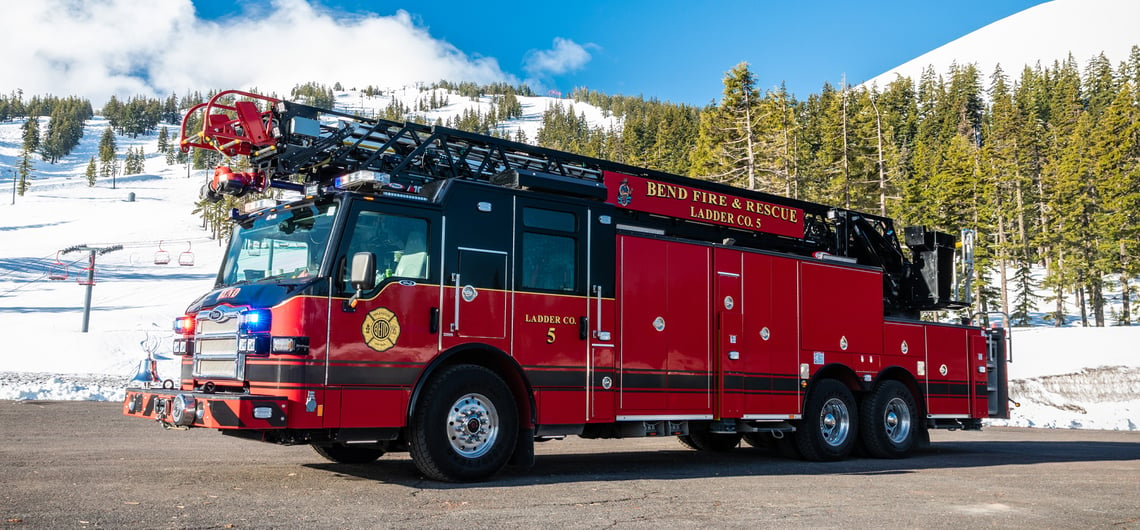
As fire departments consider adding apparatus to an existing fleet, they are tasked with considering everything from initial project budget to final configuration requirements.
These conversations become even more valuable when they include mission-specific requirements and hone in on the fire department’s truck capabilities. Weather-related factors are one such consideration, which can significantly impact operational effectiveness and mission success.
This blog reviews several questions and considerations fire departments should consider when it comes to climate and the procurement of new apparatus.
Questions You Should Ask About Climate-Specific Fire Apparatus Features
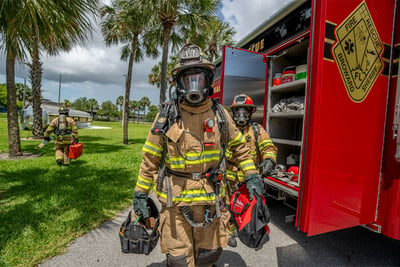 Before you dive into the fire truck procurement process, consider the types of questions you should ask your committee members and fire service personnel.
Before you dive into the fire truck procurement process, consider the types of questions you should ask your committee members and fire service personnel.
Considering the following climate-based points of discussion for specing a new apparatus:
- What is the mission of the truck? Consider the types of calls the truck may respond to, and what types of equipment and personal need to be onboard.
- Will tools or supplies need protection from the elements? Are there any supplies onboard requiring refrigeration or temperature control? Are there any tools or equipment needing protection from wind, sunlight, heat, fuel vapors and moisture?
- What is required onboard to protect firefighters? Some apparatus requires specialized equipment or components to ensure firefighters remain safe in hazardous conditions.
- Are you in an area that could have extreme heat events? If your station provides coverage in areas of extreme heat, you may need additional system capabilities to keep firefighters safe from heat-related injury or illness.
- Is there anything you need to protect from freezing? If your station is in a cold-weather climate, are there tools or equipment onboard which cannot withstand cold? Are there fluids or medicines which cannot freeze? Will the truck carry any water or have a waterway?
As you consider adding a new fire truck to your station’s fleet, familiarity with these questions can ensure your new truck specification meets all your requirements. But it’s important to talk with your fire truck manufacturer and dealer to make sure you all understand the needs of the station.
For example, your manufacturer should have recommendations for maintaining vehicles during extreme heat and/or cold and should work with you to design and configure your new truck to factor in weather events.
There are many climate-specific customizations for fire trucks; here are some of the innovative solutions Pierce Manufacturing has used on new custom apparatus orders.
Climate-Specific Fire Truck Features
Fire departments cannot afford to be out of commission if adverse weather strikes; they count on fire apparatus to operate effectively in all weather conditions. There are, however, some unique fire truck features designed to help manage any challenge Mother Nature may impart.
Climate Controlled Compartments
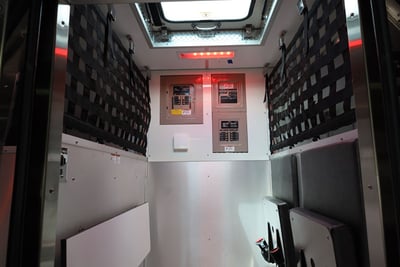 Fire trucks customized to meet the demands of a department should be equipped with compartments which can be customized as well.
Fire trucks customized to meet the demands of a department should be equipped with compartments which can be customized as well.
For heavy duty rescue trucks and engines which run a lot of EMS calls, access to refrigerated items, like IV fluids and ice packs, is critical. Pierce has developed several types of climate controlled compartments designed to keep items cold for the duration of emergency scene operations. From compartments with portable refrigerators to insulted refrigerator boxes and lock boxes, climate controlled compartments can be lifesaving in the line of duty.
Keeping parts of the truck warm is another important consideration. Climate controlled compartments housing critical truck infrastructure can prevent operational components from freezing in cold temperatures. For example, Pierce offers pump heating packaging designed to protect the pump from freezing.
Automated Drop Chains
Automated drop chains are a must-have feature in cold climates where ice, snow and dangerous driving conditions are a concern.
Automated drop chains are pre-mounted chains designed to spin chains against tires in motion, brushing off snow and breaking up accumulated ice. Automated drop chains are controlled by the operator in the cab with the push of a button and provide effective snow and ice removal for mild and moderate snow conditions. For blizzard-like conditions, fire departments often choose to manually add chains for added traction.
Studded Outrigger Pad
On many ladder trucks, outriggers are smooth surface materials. This, however, can lead to dangerous, slippery conditions in adverse weather.
An outrigger pad outfitted with a studded feature is designed to increase friction between the metal and icy surfaces to reduce sliding and to keep the apparatus secure for on-scene operations.
Supplemental Cab Insulation
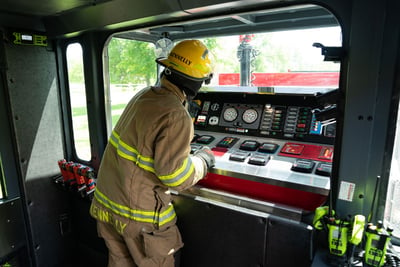 Keeping firefighters cool in the line of duty can help prolong their operational capabilities and manage overall health and safety. When the weather heats up, a cab unable to maintain cool temperatures can become a hazard, rather than a safe haven.
Keeping firefighters cool in the line of duty can help prolong their operational capabilities and manage overall health and safety. When the weather heats up, a cab unable to maintain cool temperatures can become a hazard, rather than a safe haven.
Air conditioning evaporator capacities to eject as much heat as possible. A key to the performance of the system is to also minimize the heat egress into the cab. There are now options for high R value insulation and UV radiation absorption film for the windows to block the heat. Both the AC and the insulation features work together to cool the cab in extreme temperatures.
Cabs with supplemental insulation are designed to keep cool even as temperatures rise. The added insulation is designed to manage heat in the cab and maintain cool temperatures for firefighters who need a safe space to rest and rejuvenate on scene.
Fire Apparatus Window Tint
Fire apparatus equipped with an engineered solar film, not just tinting, absorb UV radiation at the film to prevent the solar heat from being a contributor to the overall heat load into the cab. Just as the insulation reducing the external heat from ambient air and engine from heating the cab.
HVAC System Capabilities
Maintaining a consistent interior cab temperature is essential for firefighters who are managing prolonged fire events. The cab provides a safe and comfortable space to get out of the elements and recharge as time allows.
Advanced heating, ventilation and air conditioning systems (HVAC) should be designed to work quickly to combat fog and mitigate heat and humidity. HVAC systems designed to manage air-flow, temperature and fan control can ensure the safety of first responders.
There are now three levels of AC system Pierce offers. The system chosen should depend on the Departments geographic location in the country. The three systems are Standard Duty for northern climates, Heavy Duty for the country’s mid states and the new Extreme Duty for Southern and Southwestern states.
Supplemental A/C 12-Volt System
In warmer climates, a supplemental A/C 12-volt system may be a consideration to use outside of the cab. A 12-volt A/C system runs off of a shore line and can function independently of the HVAC system.
Electrodeposition Coating (eCoat)
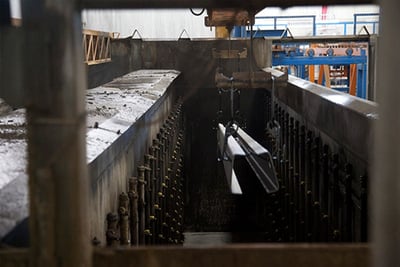 Electrodeposition coating (e-coat) corrosion protection is a primer applied to apparatus parts, frame rails and components to provide resistance to corrosion, abrasion and chemicals.
Electrodeposition coating (e-coat) corrosion protection is a primer applied to apparatus parts, frame rails and components to provide resistance to corrosion, abrasion and chemicals.
In cold weather climates, eCoat can help prevent corrosion related to chemical deicing agents, while in warm climates, eCoat can help reduce corrosion and abrasion from salt water spray and sand.
It is best to work with your fire truck manufacturer and dealer to determine the best protection for your climate and location.
Outrigger Ground Pads
When an aerial arrives on scene, it must find suitable terrain to set up and begin operations. If the ground is soft, like sand or grass or extremely hot, like black asphalt, the outriggers may be unable to appropriately secure footing.
At these times, having a truck equipped with outrigger ground pads is critical. Outrigger ground pads are placed below the outrigger pads to expand the load-bearing area and increase stability. Some apparatus, like the Ascendant® 100' Heavy-Duty Aerial Tower, have integrated ground pads designed to streamline setup.
Whether your fire department is stationed in a cold weather climate or you enjoy warmer weather all year long, having a fire truck customized with climate-based features can help improve overall efficiency and effectiveness in the field. By reducing weather-related risks with strategic fire truck design, firefighters are able to focus on the lifesaving tasks at hand.
Do you have any climate-specific fire truck features or questions? Contact your local dealer to learn more or leave a comment below!